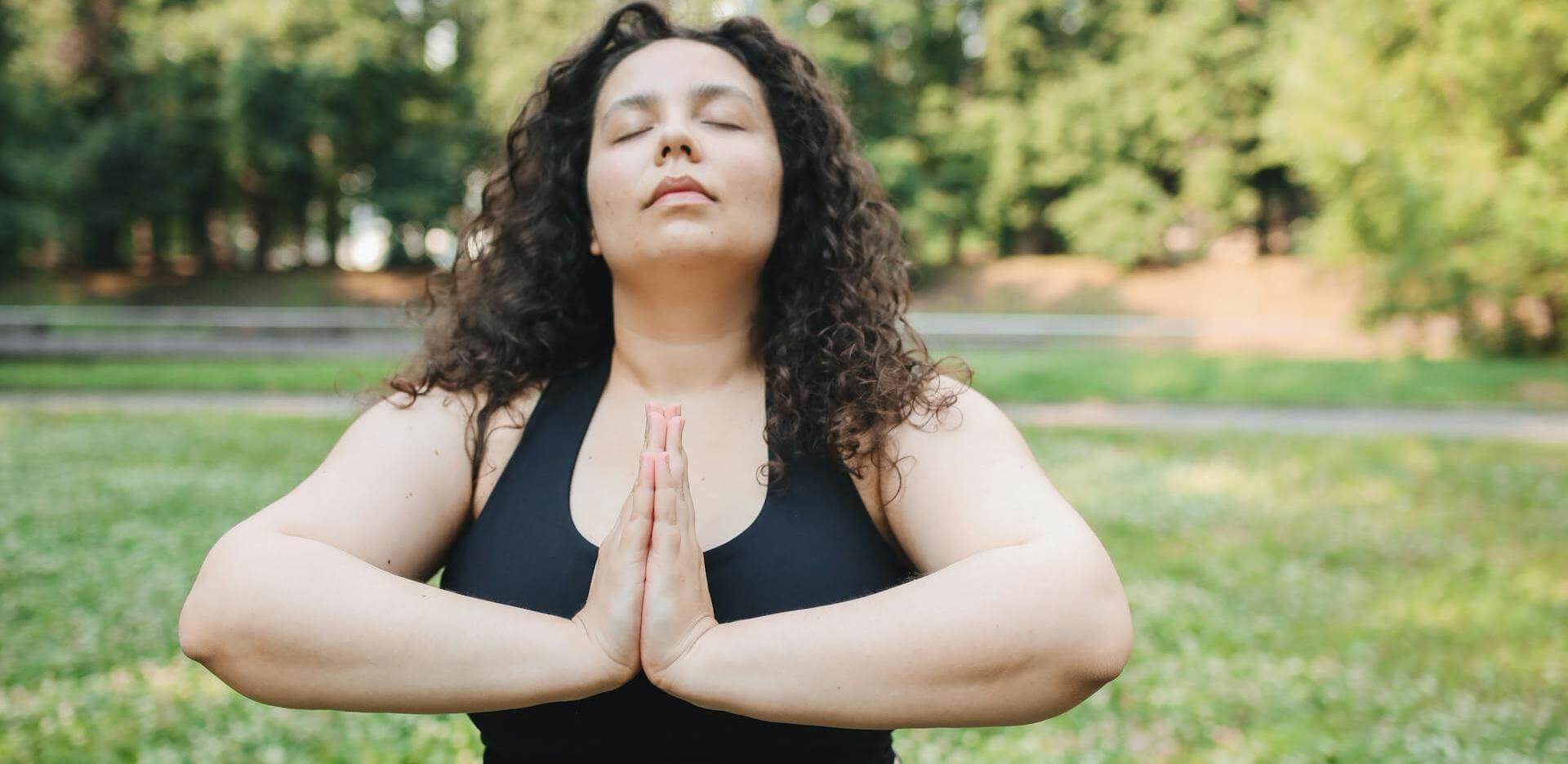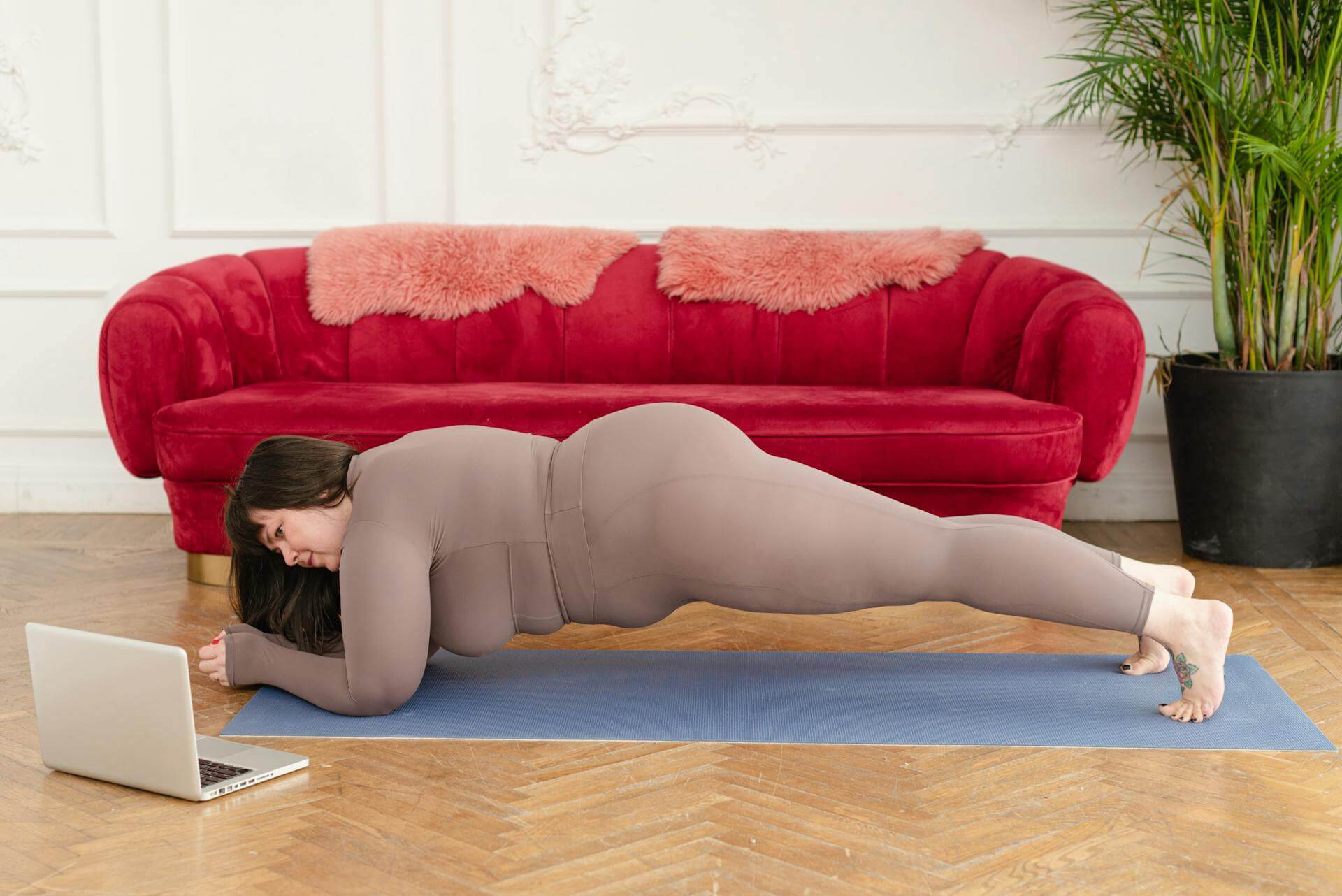
Teaching Yoga to Plus-Sized Students
Yoga has proven to be an essential form of exercise on a global scale. Doctors recommend them to patients as part of their aftercare, it has become an It lifestyle for a time, and while there exist 23 official yoga styles/disciplines, new methods are developed with the word ‘yoga’ slapped at the end of it patented and pending. The point is that the world seems to be saying “Everybody needs yoga.” So how come our student rosters don’t fill up with all kinds of bodies, specifically plus-sized practitioners?
There are plenty of yogipreneurs that embrace body positivity. One of the major pioneers is Anna Guest-Jelley. She has been training instructors in the art of body acceptance through yoga for more than a decade. I am truly grateful for her presence in our industry. Still, I have yet to see more plus-sized students unabashedly walking into any other yoga class, most choose a plus-sized teacher to learn from. Is it a misstep on our part? If it is, then it is something we ought to correct.
What makes me the authority on this subject? It doesn’t. I only hope that I can tell you a little story with a few things I learned along the way to help you navigate through teaching individuals with the aforementioned issues.
I started as a plus-sized student in Asia, a continent that aimed for perfection in every way. Upon stepping into my first class, I was glared at, judged, and made to feel like I was in the wrong class. “What is she doing here?” they whispered. Some even took it upon themselves to do me the “kindness” of imparting the harsh truth. I will never progress because of my size so I might as well give up now. With time, I surpassed the here and naysayers by way of vocation. I also promised to create a space that promotes building self-confidence and body positivity. I’m here to share that with you today.
Know Your Client
First of all, I will not profile plus-sized students in this article for the simple fact that we can’t. There are so many reasons why someone is a certain shape. It could be a number or a combination of several factors: structural, hormonal, emotional, external, and medical circumstances. So trust and empathy play an important part in establishing rapport with this client. It all starts with your first contact. We, as teachers need to show that our space is safe. Moreover, our shala has to be equipped for all types of bodies that will come through. Blocks, bolsters, straps, and kneepads should be available to the maximum number of students and teacher in your studio. In my class, I would have all my students prepare their spots with all the accessories available. Not only will they have a more complete experience but the class looks like everyone is on equal footing even if it is a mixed-level session. I also watch out for everyone’s wrists, knees, and ankles as they are the weakest parts of the body. I tailor my options to lessen the pressure on these joints and stretch them after strength poses.

Be Welcoming but not Overwhelming
People know when you're trying too much. I learned that the hard way. I wanted to show my plus-sized students how much I would love to help them that they lost their autonomy. Needless to say, I never saw those students again. It was a lesson worth learning. There´s a fine line between equality and attention. So observe. Add more options to your planned sequence. For example when you teach Chatarunga, have an assisted alternative pose with blocks, straps, or bolsters, a modified pose, and a progression pose. I always point out in my classes that having yoga props doesn’t mean you’re weak. They are tools to help you reach the correct alignment no matter your level. Assist when needed and keep an eye out in general. My mistake was that I kept on helping my plus-sized students so often that I was hovering. I ended up pulling them apart from the community instead of integrating them by keeping their autonomy.
Reassurance and Recognition
Anna Guest-Jelley probably said it best. In her ‘about’ page in Curvy Yoga, she said, “ Curvy Yoga Practice starts on your yoga mat because yoga isn’t part of a “fix yourself” paradigm but rather a “know yourself” paradigm. And then it journeys with you off your yoga mat because the same is true of body acceptance. While you may experience fleeting moments of epiphany or joyous love for your body, the day-to-day experience of body acceptance is much quieter than that — and ultimately more powerful because it becomes part of your everyday life.” When you internalize these words, It can and will apply to all your students. I have applied this into my mixed level mixed age, and mixed body type classes. It has served me immensely well for the past years. We have to foster this energy we are all having a conversation with ourselves whenever we go on the mat. Those conversations will be different every time. Sometimes we argue, other times we hit a breakthrough, most importantly they all count if we want to get anywhere. So recognize your students with every progression they make. Congratulate them for their effort. Let them know that they are exactly where they should be.
Prevent Cut Negativity as it Pops Up
Not everyone will be nice. As we sharpen our skills in class management, we will acquire more skills to keep the peace in our classes. To prevent any negativity in class, a student shuffle every so often can be very helpful. Through this we can separate the “cliques”, and others can move to another spot to find friends. How do we shuffle students? Ask your group to switch up with the front and back, another is to ask your students to find new faces to sit by, or change arrangements, etc. It works like a charm. It’s an act that everyone participates in with no exclusion. Let’s say we catch some negativity at the start of the class, we may remind the students what our practice represents. If it happens after, then comfort for the targeted person is given. If an argument breaks out, we need to settle accordingly depending on your company’s policy. Diplomacy is key.
When working with plus-sized students, the keys are to know them. Not necessarily on a personal level, it´s about taking into account the several nuances they may have. Assure them that they can progress greatly as they keep coming back to the mat but not so much as to “other” them. We also take into account possible insecurities that might be on their minds during practice. Examples are; belittling the positive and magnifying the “failures”– so we need to help our yogis recognize and remind them and that every millimeter of progress counts. Lastly, we need to nip the negative energy in the bud by fostering a safe space for all our practitioners.
Throughout my years of teaching, l have strived to make good on my word that every size, shape, age, and identity that walks through my door will receive kindness and support. I never judge anyone who attends my sessions because they are unhelpful thoughts such as mental filtering, labeling and/or jumping to conclusions. The truth is we might know only a fraction or nothing about why is someone the way they are unless we get to know them. The only thing we can do as teachers is to be present. I hope this article served you well.
Good luck and take care Momoyogis.


